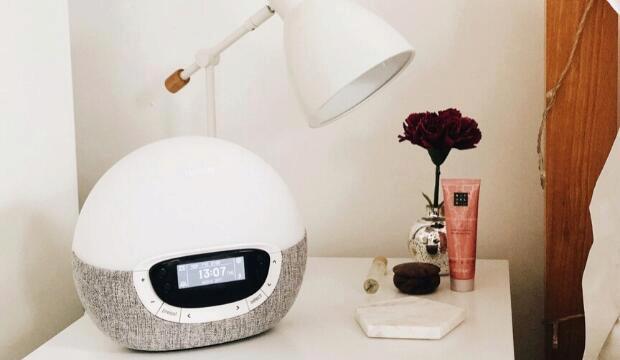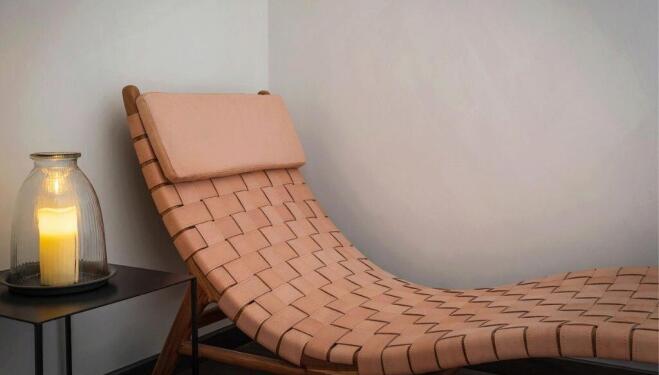Trouble dozing off? Here’s how to get a good night’s sleep
From our obsession with our precious shuteye to the tools to help us get more of it (hello Somnox Sleep Robot), here's how to achieve a good night’s sleep

How did you sleep last night? While you’re thinking about it, ponder also how many times have you asked, or been asked, that question over the years. Hundreds? Thousands? According to the World Health Organisation, we’re living through a ‘sleep loss epidemic’. In the UK alone, 9.5 million GP appointments are made every year in relation to sleeping conditions. In many cases, our fretful chase for a good night’s sleep could even be responsible for keeping us awake at night.
As the writer Pandora Sykes points out in her book of essays how do we know we’re doing it right?, ‘Millennials are obsessed with sleep. You don’t have to be an insomniac to want to talk about it all the time,’ she says. ‘We chase it, resent it, pathologise it.’ So much so, in fact, that there’s a name for sleep obsession: orthosomnia. There’s even a World Sleep Day (which, if you’re curious, next falls on 12 March 2021).

Sykes goes on to point out that according to the Centre for Time Use Research, we’re actually getting more sleep now than ever before – an average of eight hours and 30 minutes per night for women. This is well in-line with the NHS's recommendation of six to nine hours a night (which allows for the fact people need different amounts of pillow time to function). Still, we worry we’re not getting enough, blame it for our bad days and bring it up in conversation regularly.
This year’s coronavirus pandemic and subsequent lockdown hasn’t helped matters. According to a survey by the Institute for Employment Studies (IES) conducted relatively early on in lockdown, almost two-thirds (64%) of its 500 respondents believed they were sleeping less due to worry.

That said, our obsession with sleep is nothing new. An article published in the Guardian in 1954 quoted a doctor who had attended a British Medical Association (BMA) meeting on sleep as saying insomnia was now ‘almost a fashionable disease or state’. The article went on to suggest tips for getting a better night’s sleep, including prayers before bed (the 50s equivalent to self-care?) and, more surprisingly, a plate of porridge before bedding down for the night. (Countless studies since then have suggested not going to bed on a full stomach to be far better for digestion and aiding a good night’s sleep.)

Orthosomnia aside, why is a good night’s sleep so important? On a day-by-day basis, it increases our chances of waking up feeling bright-eyed, bushy-tailed and ready to tackle the day’s tasks. Meanwhile, it probably won’t come as news that in the long-term, sleep deprivation can lead to a range of physical health problems (including heart disease, diabetes and obesity), and mental health problems too, including anxiety and depression.
Our digestive system also suffers from a bad night’s sleep. Constipation, heartburn, IBS and even flare ups of Crohn’s disease (within people who suffer from the illness) can all be linked to poor sleep. The term ‘beauty sleep’ isn’t idle either, with studies confirming that, thanks to it being the time our collagen repairs itself, sleeping for a decent amount of time can leave our skin firm and glowing.

While the term ‘orthosomnia’ focuses negatively on our unhealthy fixation on sleep, a more positive concept is ‘sleep hygiene’. The Sleep Foundation defines positive sleep hygiene as: ‘having both a bedroom environment and daily routines that promote consistent, uninterrupted sleep. Keeping a stable sleep schedule, making your bedroom comfortable and free of disruptions, following a relaxing pre-bed routine, and building healthy habits during the day’.
With this in mind, here are some of the widely agreed on methods and practices to help achieve a good night’s sleep.

The basics for getting a good night’s sleep
- Install blackout blinds in your bedroom or get into the habit of sleeping with an eye mask on to block out light.
- Write a ‘to do’ list for the next day to organise your thoughts and clear your mind.
- Introduce a sleep routine, going to bed and waking at the same time every day.
- Try to ensure your bedroom has a temperature between 18C and 24C (optimal for sleep according to the Sleep Council).
- Have a hot bath or shower one to two hours before bed (research from the University of Texas believes water at 40-42.5C is optimal).

- Be strict about not using screens two hours before you go to bed and rid your bedroom of any blue light or sound-emitting technology – both are known to wreak havoc with your circadian rhythms (the natural, internal process that regulates the sleep-wake cycle) while interference of blue light also inhibits the production of melatonin, which makes it harder to fall asleep.
- Allow 30 minutes for winding down, be it through meditation, yoga, listening to music or reading.
- Dim the lights: bright lighting obstructs the body’s production of melatonin; instead look to softer lighting such as that emitted by lamps, bedside lights and candles.
- Don’t toss and turn: if, after 25 minutes, you’re still wide awake, get up and do something calming (in dim lighting) – such as reading, meditation or yoga – before trying to fall asleep again.
Products for achieving a better night’s sleep

Somnox Sleep Robot
Sleep soundly with the Somnox Sleep Robot
While sleeping with your arms wrapped around a kidney-shaped cushion that breathes like a human might sound like something out of a futuristic sci-fi film, bear with us: because the Somnox Sleep Robot is among the best drug-free sleep innovations on the market for optimising the quality of your night’s sleep. Mirroring your own breathing patterns, the Sleep Robot adopts rhythmic movements and sounds designed to help you relax, fall asleep more easily and obtaining a deeper, more restorative sleep.
Somnox users speak for its success, with eight out of 10 citing better sleep when using the Sleep Robot and a survey by the company finding the total time awake during the night decreased from 46-60 minutes to 16-30 minutes among those using it. What's more, with a 30-day free trial, there’s plenty of time to put its promises to the test and find out if it’s the right solution to your sleeping troubles before committing.
Shop it now
Doze off with a calming scent
Culture Whisper’s beauty director has long commended the benefits of the scent of lavender for inducing a calmer state of mind. In particular, she recommends Neal’s Yard Esta Aroma Diffuser, £57.50 with Lavender Essential Oil, £12, commenting: ‘With two soft-light settings, this diffuser from Neal’s Yard is a great choice for someone looking for evening comfort. The lavender essential oil is an ultra-relaxing option to promote calmness and induce deep sleep.’ Also in the range is a Goodnight Pillow Mist, £15, for those hoping to carry over the evening’s calmness into the night.

Bose Sleepbuds
Cancel out sound with a set of Sleepbuds
The noise-masking Sleepbuds from Bose come with built-in noise-masking technology, allowing sleepers to choose from ten soothing sounds – some optimised for sound-masking and others for relaxation – to help you drift off and wake up peacefully.
Track your progress with a sleep app
The App store and Google Play are both littered with apps promising to help you achieve a good night’s sleep. But not all apps have been made equal. One recommended by the critics is SleepScore ($6 per month, or free with limited access), which not only offers actionable advice to help its users reach their sleeping goals, it monitors your sleep, tracking records to help you create a path towards improvement.
Meanwhile, for those keen to try the latest technology, there’s Rise, a new-for-2020 app which, for £8.99 a month, offers a personalised plan including mindfulness sleep meditation, guided imagery, progressive muscle relaxation, and even Acceptance and Commitment Therapy (ACT), delivered by a clinical psychologist, Dr Danielle Landau.

Lumie’s ‘Bodyclock Shine 300 Wake up to Daylight SAD Light
Wake up gently with a Lumie Bodyclock SAD Light
SAD alarm clocks – which use a form of light therapy to treat the condition of Seasonal Affective Disorder – allow the body to wake up gradually and to natural light, both of which are beneficial if you want to rise feeling refreshed. The clocks work by gradually emitting light for 30 minutes in the lead up to your desired wake-up time, combatting the sudden sounds of a regular alarm clock which causes the body to release cortisol – the main stress hormone. Market-leader Lumie’s ‘Bodyclock Shine 300 Wake up to Daylight SAD Light’ wakes you up with an artificial sunrise which you can personalise to last anywhere between 15 and 90 minutes. The light also boasts a sunset feature and sounds to help you wake up or fall asleep.





